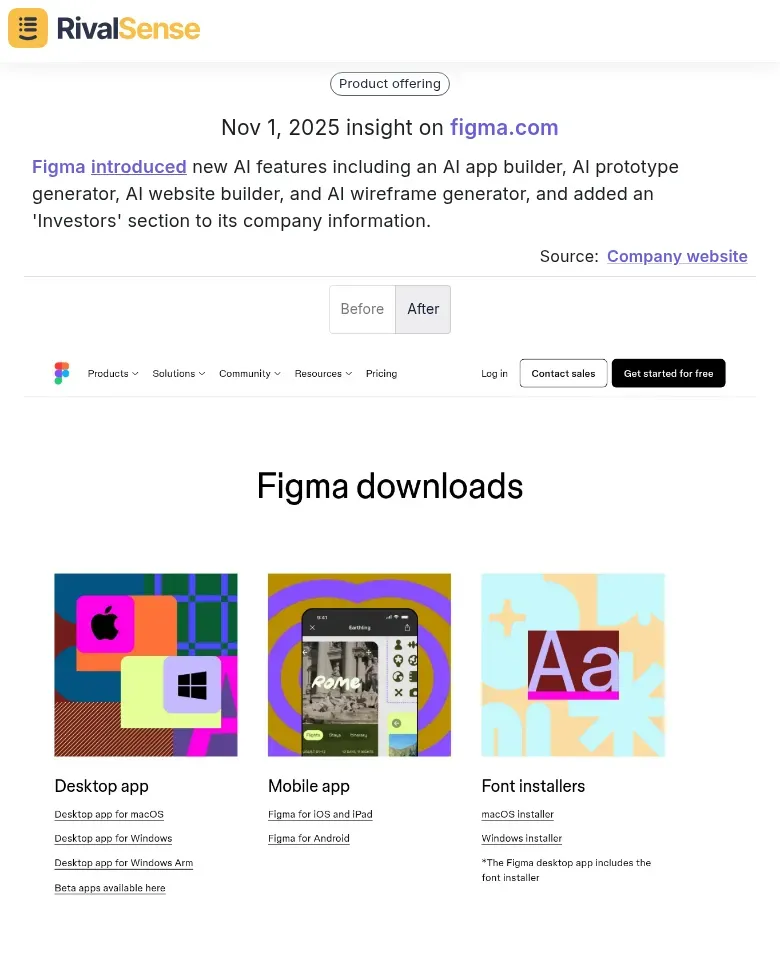Key Account Management Models: A Strategic Guide for Business Leaders
In today's competitive B2B landscape, simply acquiring customers isn't enough. The real value lies in nurturing and growing your most important relationships through effective key account management (KAM). While traditional account management focuses on maintaining all customer relationships, key account management zeroes in on your most valuable clients—those who drive significant revenue and strategic value for your business.
What Are Key Account Management Models?
Key account management models are structured frameworks that help businesses systematically manage their most important client relationships. These models provide the strategic approach needed to transform transactional relationships into long-term, mutually beneficial partnerships. By adopting a formal model, companies can ensure consistency and scalability in how they handle top accounts.
The Strategic Account Management Model
This model treats key accounts as strategic partners rather than just customers. The focus shifts from reactive support to proactive value creation, fostering deeper collaboration. Key elements include:
- Deep Business Understanding: Knowing your client's industry, challenges, and strategic objectives
- Joint Business Planning: Collaborating on shared goals and success metrics
- Executive Alignment: Ensuring C-level engagement from both organizations
- Value Co-creation: Developing solutions that deliver measurable business outcomes
Practical Tip: Create a "strategic account plan" for each key client that outlines mutual objectives, success metrics, and regular review cadence. 📈
The Relationship-Based Model
This model prioritizes building strong, trust-based relationships through consistent, high-touch engagement. It emphasizes personal connections and tailored interactions to foster loyalty. Key components:
- Dedicated Account Teams: Assigning specialized resources to each key account
- Regular Executive Check-ins: Quarterly or monthly strategic reviews
- Personalized Communication: Tailoring interactions to client preferences and communication styles
- Relationship Mapping: Understanding the client's organizational structure and decision-makers
Checklist for Implementation:
- ✅ Map all key stakeholders and decision-makers
- ✅ Establish regular communication cadence
- ✅ Document relationship health metrics
- ✅ Track engagement quality and frequency
The Value-Based Model
This approach focuses on demonstrating and quantifying the value your partnership delivers. It's particularly effective for justifying premium pricing and expanding account relationships by showing tangible benefits.
Steps to Implement:
- Identify key value drivers for the client
- Establish baseline metrics before implementation
- Track ROI and business impact regularly
- Create value realization reports
- Use data to justify expansion opportunities
For instance, tracking competitor product launches can reveal how others add value. RivalSense insights, like Reverse Health's free Carnivore Macro Calculator, show how tools can enhance customer engagement.

Why it's valuable: Monitoring such product launches helps you understand competitor strategies for value demonstration, inspiring ideas to tailor your own KAM approaches and stay relevant. 🚀
Why Key Account Management Models Matter
Effective key account management models drive long-term business success by focusing resources on high-value relationships. They help in retaining top clients and unlocking growth opportunities within existing accounts.
Maximize Revenue from Existing Relationships
Research shows that increasing customer retention by just 5% can boost profits by 25-95%. Key account management models help you systematically identify and capitalize on expansion opportunities within your most valuable accounts. By nurturing these relationships, you can reduce churn and increase lifetime value.
Competitive Intelligence Integration
Understanding your client's competitive landscape is crucial for proactive key account management. Tools like RivalSense provide real-time insights into competitor movements, enabling you to offer strategic advice that solidifies your partnership.
Pro Tip: Use competitive intelligence to anticipate your client's needs before they articulate them. For example, when Figma introduced new AI features, it signaled a shift in product innovation.

Why it's valuable: Tracking competitor AI launches and investor updates helps you advise key accounts on emerging trends, positioning you as a forward-thinking partner rather than just a vendor. 🤖
Implementing Key Account Management Models: A Step-by-Step Guide
Successfully implementing KAM models requires a structured approach tailored to your business needs. Follow these steps to build a robust framework that drives results.
Step 1: Identify Your Key Accounts
Not all customers deserve key account treatment. Use these criteria to identify true key accounts:
- Revenue contribution (top 20% of customers)
- Strategic importance to your business
- Growth potential
- Influence in your industry
- Alignment with your long-term strategy
Step 2: Select the Right Model
Choose a model that aligns with your company's capabilities and your key accounts' needs. Consider factors like resource availability and competitive dynamics to ensure a good fit.
Step 3: Develop Account-Specific Strategies
For each key account, create a customized approach that includes:
- Account Objectives: What success looks like for both parties
- Relationship Map: Key stakeholders and influencers
- Value Proposition: Specific benefits you deliver
- Growth Opportunities: Upsell and cross-sell potential
- Risk Assessment: Potential threats to the relationship
Step 4: Implement Technology and Processes
Leverage technology to scale your key account management efforts efficiently. Integrated tools streamline data collection and analysis, enhancing decision-making.
Practical Advice: Consider integrating RivalSense into your account management workflow. By receiving weekly reports on competitor activities, market trends, and industry developments, your account managers can provide proactive, data-driven insights that strengthen client relationships.
Common Challenges and Solutions
Implementing KAM models can face hurdles, but with the right strategies, these can be overcome. Addressing common issues early ensures smoother adoption and better outcomes.
Challenge: Resource Constraints
Solution: Focus your key account resources on the accounts with the highest potential return. Use technology to automate routine tasks and free up time for high-value strategic work.
Challenge: Measuring ROI
Solution: Establish clear metrics from the beginning, including:
- Account growth rate
- Customer lifetime value
- Referral rates
- Strategic value delivered
Challenge: Staying Ahead of Competitors
Solution: Implement systematic competitive monitoring. Tools like RivalSense can alert you to competitor product launches, pricing changes, and strategic moves, allowing you to proactively address potential threats to your key account relationships.
Advanced Strategies for Key Account Management
Elevate your KAM efforts with innovative approaches that go beyond basic account maintenance. These strategies foster deeper partnerships and drive mutual growth.
Co-creation and Innovation Partnerships
Move beyond vendor-client relationships to true innovation partnerships. Work with key accounts to develop new solutions, pilot features, and share insights for collective success.
Data-Driven Account Management
Use data and analytics to predict account health, identify expansion opportunities, and personalize engagement. This objective approach ensures decisions are based on evidence rather than assumptions.
Expert Insight: "The most successful key account managers don't just react to client needs—they anticipate them. By combining deep client knowledge with market intelligence from tools like RivalSense, they can provide strategic guidance that makes them indispensable partners rather than replaceable vendors."
Monitoring Regulatory and Market Changes
External factors like regulatory shifts can impact your key accounts significantly. Staying informed allows you to advise clients proactively and adjust strategies accordingly.
For example, a new City Council bill in NYC regarding short-term rentals could affect clients in real estate or hospitality.

Why it's valuable: Tracking regulatory changes helps you anticipate market disruptions, enabling you to guide key accounts through challenges and identify new opportunities. 🏛️
Key Performance Indicators for Key Account Management
Track these metrics to measure your KAM program's effectiveness and ensure continuous improvement. Regular monitoring highlights areas for adjustment and celebrates successes.
- Account Growth Rate: Year-over-year revenue increase
- Customer Lifetime Value: Total revenue per account
- Net Promoter Score: Client satisfaction and loyalty
- Strategic Initiative Success: Achievement of joint business objectives
- Competitive Defense Rate: Ability to protect accounts from competitor advances
The Future of Key Account Management
As markets evolve, KAM will increasingly rely on technology and data-driven insights. Embracing these trends ensures your strategies remain relevant and effective.
- AI and Predictive Analytics: Anticipating client needs and risks
- Real-time Competitive Intelligence: Staying ahead of market shifts
- Personalization at Scale: Delivering customized experiences efficiently
- Value-based Pricing: Aligning costs with delivered outcomes
Getting Started with Key Account Management
Implementing effective key account management models requires a committed approach from leadership and teams. Start with a clear plan and the right tools to build a foundation for success.
- Executive Buy-in: Ensure leadership understands and supports the strategic importance of KAM
- Proper Tools: Invest in technology that supports your chosen models
- Trained Personnel: Develop account managers with both relationship-building and strategic thinking skills
- Continuous Improvement: Regularly review and refine your approach based on results and feedback
Final Thought: In today's dynamic business environment, simply maintaining key accounts isn't enough. The most successful companies use structured key account management models combined with real-time competitive intelligence to proactively grow their most valuable relationships. By understanding not just your clients but their entire competitive ecosystem, you position your partnership as an essential strategic advantage.
Want to enhance your key account management strategy with real-time competitive intelligence? Try out RivalSense for free at https://rivalsense.co/ and get your first competitor report today to strengthen your most important client relationships. 📊
📚 Read more
👉 Key Account Management Newsletters: Software Comparison and Strategic Insights
👉 How YouTube's Partner Shift Empowered Rivals' Creator Growth
👉 Avoid These Instagram Competitor Insight Mistakes for Innovation
👉 Construction Key Account Management Best Practices for IoT SaaS
👉 Mastering Competitor Tracking: Financials, Fundraising, and M&A for B2B Leaders
